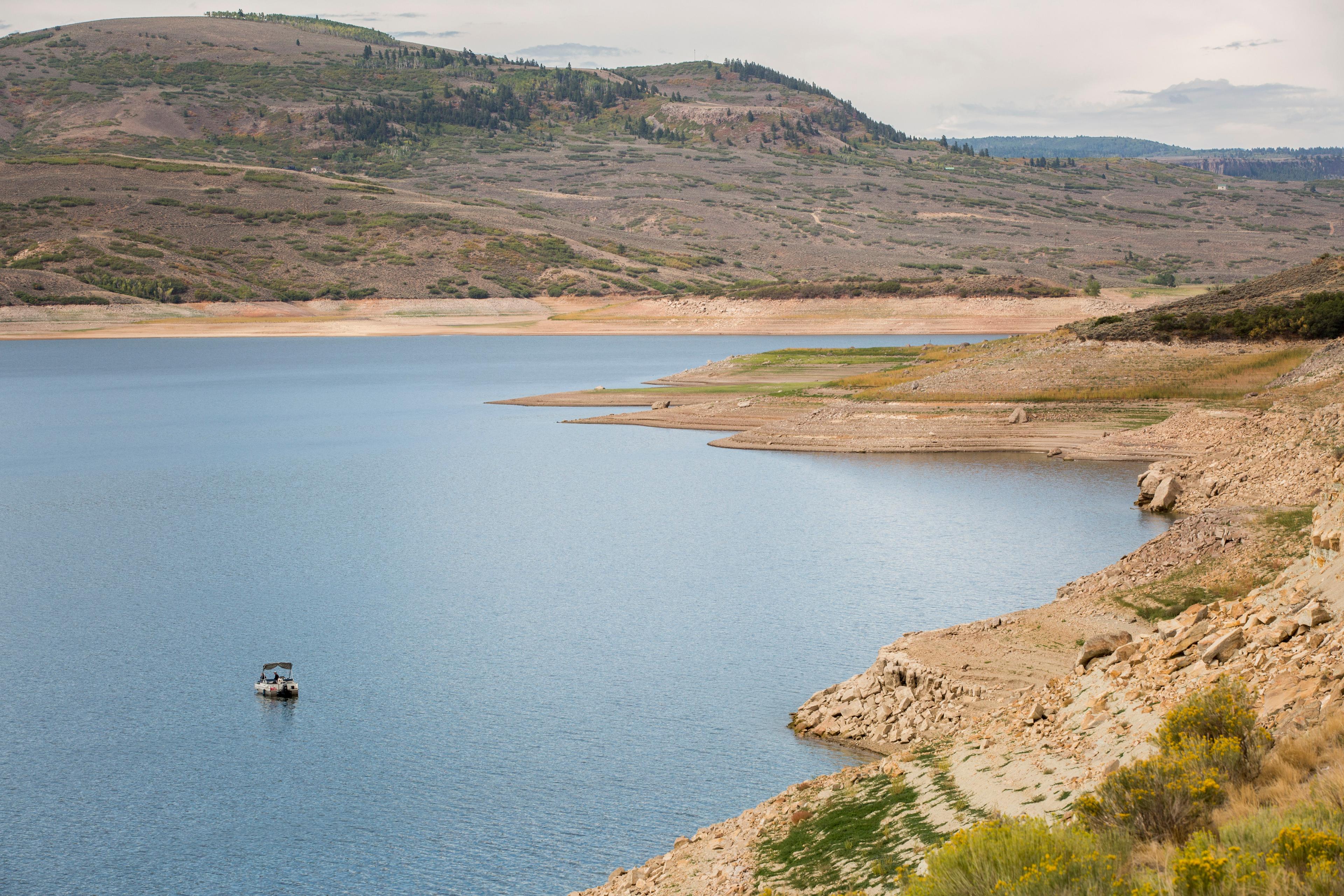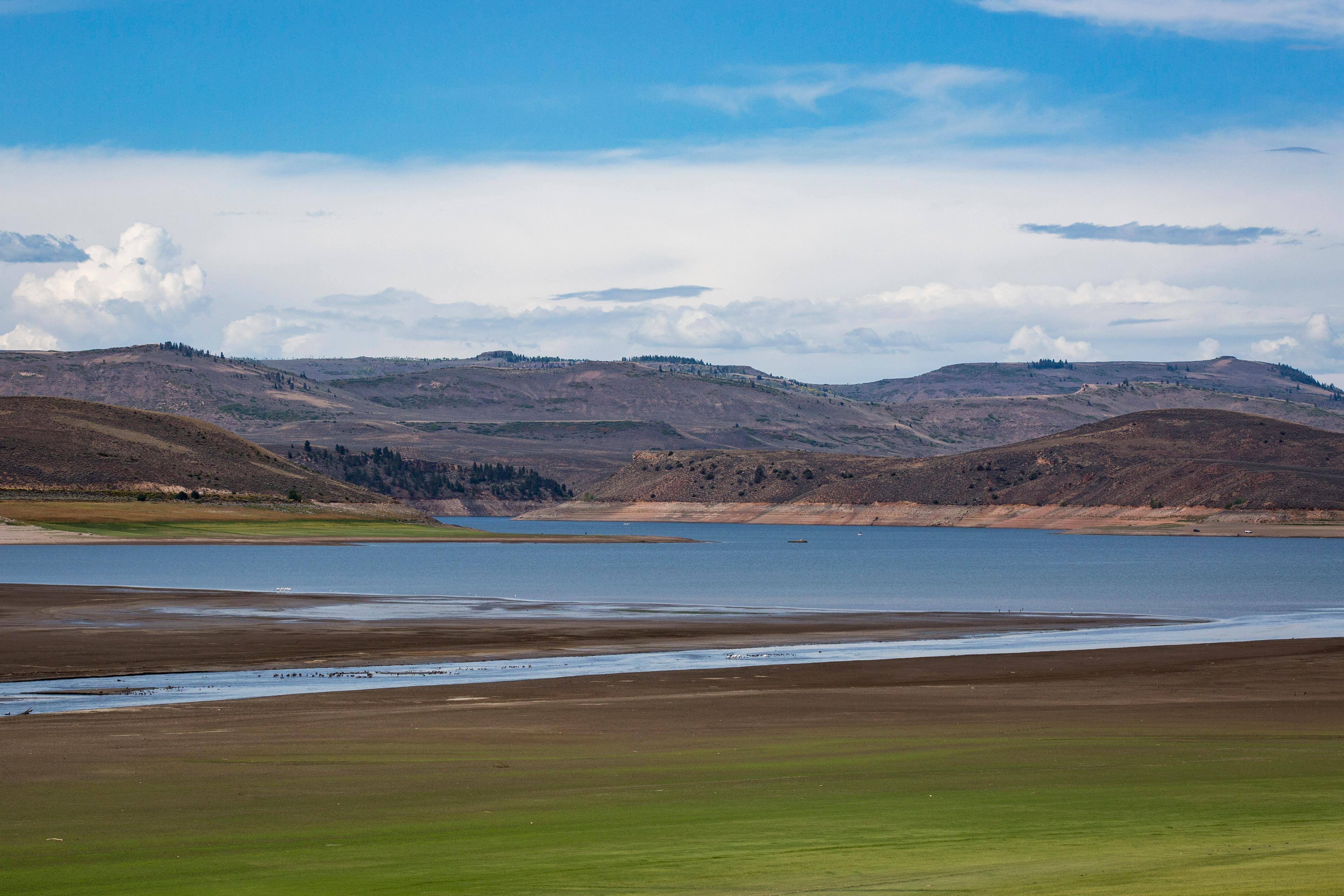

Drought has severely affected reservoir levels in Colorado and water supply is well below normal in almost all of the state’s major basins.
The Colorado Division of Water Resources reports the basins were 50 percent full at the end of August, in contrast to last year's 120 percent average capacity. The average for this time of year is about 82 percent.
The Yampa-White, San Juan-Dolores, Rio Grande, Gunnison and Colorado river basins are classified as being in either "moderate" or "severe drought."
The Blue Mesa Reservoir near Gunnison on the Curecanti National Recreation Area, is near historic lows -- it's 39 percent full -- and has closed almost all its boat ramps. Iola closed Thursday night, the Lake Fork ramp closes Monday. That will leave only the Elk Creek ramp on the reservoir's north shore along Hwy. 50 open, said recreation area spokeswoman Sandra Snell-Dobert. “Elk Creek, the ramp will remain open as long as we can keep it open."

The last time water levels were this low on the reservoir was in 1987, Snell-Dobert said. Blue Mesa usually only closes if there’s not enough staff or if the reservoir freezes. The reservoir levels now have also caused some abnormal boating hazards.
“Mostly it's rocks that are becoming exposed as the water level decreases. There are a lot of rock promontories and islands, and those kinds of things that we haven’t seen in a long time," she said. But despite the boating restrictions, Snell-Dobert said shoreline fishing, kayaking, canoeing and other hand-launched, non-motorized boating are still allowed at the reservoir.
Besides recreation, the Blue Mesa Reservoir supplies water to Montrose, Gunnison, Grand Junction and surrounding counties -- a region almost entirely under extreme drought.
Southwest Colorado river basins are all below their average levels for this time of year, the Natural Resources Conservation Service reports. The Gunnison basin is 47 percent full when on average, it’s about 59 percent full; Upper Rio Grande is 23 percent full compared to an average of 88 percent full; San-Juan Dolores is 34 percent full compared to its 48 percent average.

The drought-stressed Colorado River carried even less water than expected this summer, increasing the odds of a shortage in the vital river system in 2020, federal water managers said in August.
Water levels at Lake Mead and Lake Powell are dropping to dangerous levels, too. Lake Powell is about 48 percent full, and Lake Mead is about 38 percent full.
The Colorado River basin, which feeds the two reservoirs, has been drying out over the last two decades, scientists said. With the demands from farms and cities exceeding the available the water supply, the strains on the river and reservoirs are being compounded by growing population, drought and climate change.
The Colorado River and its tributaries support about 40 million people and more than 7,800 square miles of farmland in Mexico and Arizona, California, Colorado, Nevada, New Mexico, Wyoming and Utah. A shortage has never occurred in the river.
“There is a real sense of urgency across the basin to protect the river’s supply in the face of increasing demand and ongoing drought,” said Brenda Burman, chief of the Bureau of Reclamation.
Reservoir storage statewide is near normal to below normal. The South Platte and Arkansas River basins have well below normal streamflows, but strong reservoir storage has helped moderate their overall supply. Except for the Rio Grande, every basin has declined since the beginning of June.
The Associated Press contributed to this reporting.









